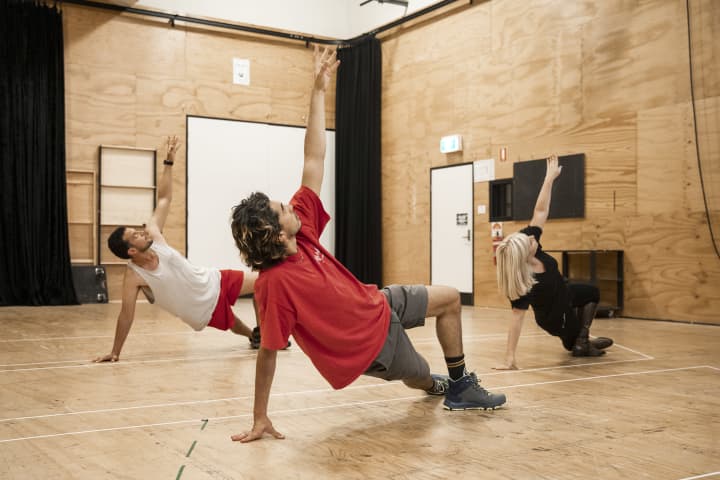Arthur Charlwood and his wife Viola’s long relationship with MTC began when the Company was in its infancy, and known as the Union Theatre Repertory Company (UTRC). Together, they attended one of the UTRC’s early performances of Summer of the Seventeenth Doll – the play widely considered a turning point in Australian theatre history, which had its world premiere season in 1955 at the Union Theatre, starring Ray Lawler and directed by the Company’s founder John Sumner.
From those humble beginnings, UTRC grew to become the Melbourne Theatre Company, and Arthur and Viola remained subscribers for the rest of their lives; when Viola died in 2001, Arthur continued attending shows with his daughter, Dianne, and granddaughter, Katherine. He only stopped attending in 2014, when he was 95 years old, because the journey into the city’s arts precinct had become too much.
Born 26 April 1919, Arthur Charlwood was always a fan of live performance. ‘He just loved live theatre and it was something that he and Mum shared throughout both their long lives,’ explains Dianne.

Viola and Arthur Charlwood. Photo: Supplied
A lifelong love
Arthur met Viola in 1937 through a mutual friend when they went to watch the Australian Tennis Championships [as the Australian Open was then known] at Kooyong. ‘Dad was rather taken by Mum,’ says Dianne. ‘He always said he had to fight off a lot of competition, but he won through!’ While they were courting, they would attend as many live performances and events as they could – theatre, opera and ballet (they attended ‘a lot of ballet performances’ by the touring Russian companies in the late 1930s).
The war put their cultural life on hold, with Arthur joining the Army Signals Division, but it couldn’t stop their love for each other. While army work meant Arthur was away from Melbourne and Viola for much of the next few years, they became engaged and in 1942, taking advantage of a few brief weeks of leave, they got married. ‘Mum used all her clothing coupons and made herself a lovely wedding dress,’ Dianne notes, ‘and they married in Ascot Vale, where we all lived until 1963.’
Their honeymoon was short-lived, however, with Arthur having to return to duty again only a few weeks later. For the last year of the war, he was stationed in Bougainville and Papua New Guinea, and wasn’t able to return to Melbourne until 1946. ‘It was tough on Mum. I think they saw each other a little bit when he was coming through Melbourne for the first year or two after they married, but once he was up in Bougainville he wasn’t able to come home.’
Following the war, they settled in Viola’s family home in Ascot Vale, and raised a family of four: Carolyn, Graeme, Dianne and Philip (who was born the same year that Doll premiered). ‘It was at that time they started going to the Union Theatre Repertory Company shows,’ Dianne says. ‘Someone would look after us, and they would head off to the theatre. And they continued going to the Melbourne Theatre Company right up until Mum died in 2001.’
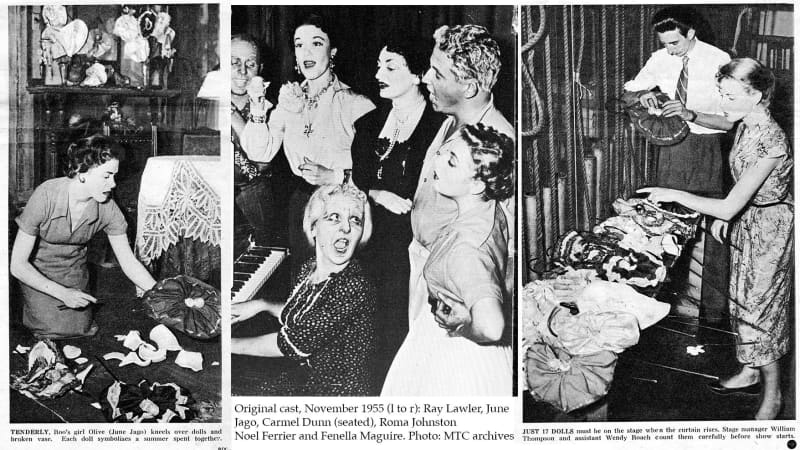
Press clippings and photos of Summer of the Sevententh Doll, 1955
Image: MTC archives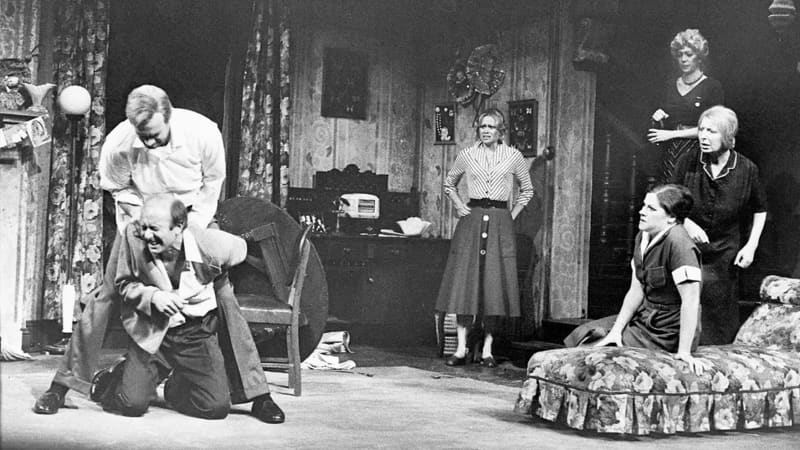
Peter Curtin, Bruce Myles (floor), Christine Amor, Carole Skinner, Sandy Gore and Irene Inescourt, performing at Russell Street Theatre, 1977
Photo: MTC archives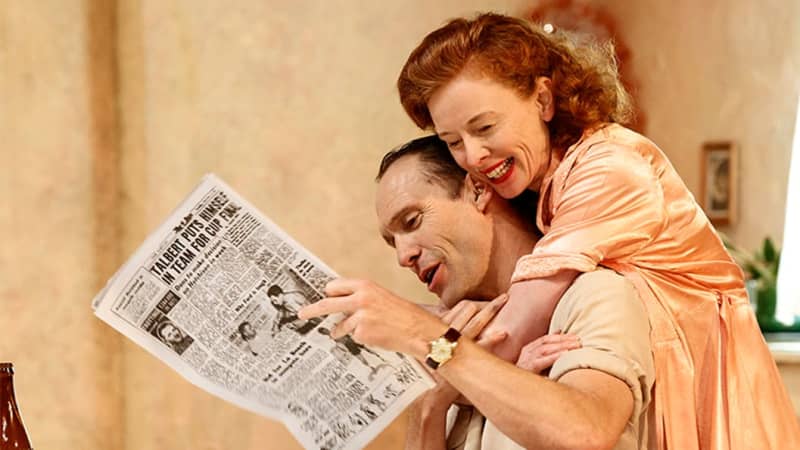
Summer of the Seventeenth Doll, 2012
Photo: Jeff BusbyTheir life’s work
When Viola met Arthur, she was working as a comptometrist, ‘which is like a typist, only with adding machines’ (in other words, she operated a comptometer, as the first mechanical calculators were then known). She worked with the Victorian Railways, putting through freight orders, and was based in the old Victorian Railways building in Spencer Street.
Except for his stint in the army, Arthur Charlwood spent his working life with Unilever, initially with the subsidiary company J Kitchen & Sons, which made Velvet soap and detergents. ‘He was a buyer for them and he bought all the ingredients for them to make their products.’ Later, after going to night school, he qualified as an accountant and in 1966 became the commercial director of Rosella Foods in Richmond.
Initially, however, he spent a significant portion of his working life in the Port Melbourne building that was re-developed on The Block in 2016. ‘Dad was very interested to see what the building still looked like in the show and he recognised areas of the building where he’d started work as a 16-year-old office boy.’
A family tradition
When Arthur retired, he and Viola had more time to enjoy the things they loved so even though they had moved further out – to Lower Plenty – they continued to make the journey into the city to enjoy cultural outings. Often, they would also be joined by Arthur’s brother and sister-in-law, Donald and Nell Charlwood. Following Viola’s death, Arthur didn’t want to stop their MTC subscription so Dianne began to join him instead and after a while Dianne’s daughter Katherine also joined this family tradition.
Dianne’s husband, Chris, was working with the University of Melbourne at the time and his job meant he was involved with the development of MTC’s Sturt Street offices and Southbank Theatre. ‘We were very fortunate to be invited as guests to many MTC shows,’ she says. ‘So we thought it would be nice for Katherine to go along with Dad rather than me going and seeing things twice.’
When tragedy struck the family with the premature death of Dianne’s sister Carolyn, the Charlwoods endowed a seat in The Playhouse for her, because Carolyn had been to see an MTC show the night before she died. 'When Mum died, Dad endowed the seat next to Carolyn’s for her and reserved one for himself. Finally, when Dad turned 100 I said to him: “you know, we don’t have to wait until you die to get your seat!”’ So after Arthur’s 100th birthday last year, his family organised to have his name on his seat too, next to Viola and Carolyn. ‘It is precious to us that their connection to the theatre lives on,’ Dianne says.
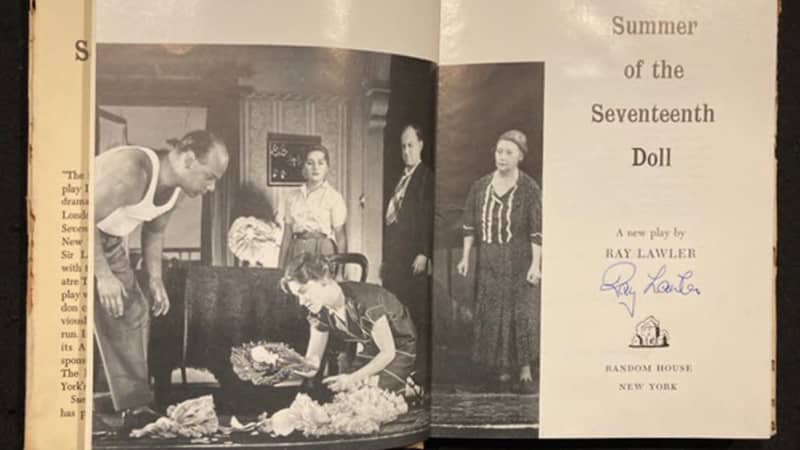
The title page, signed by Ray Lawler
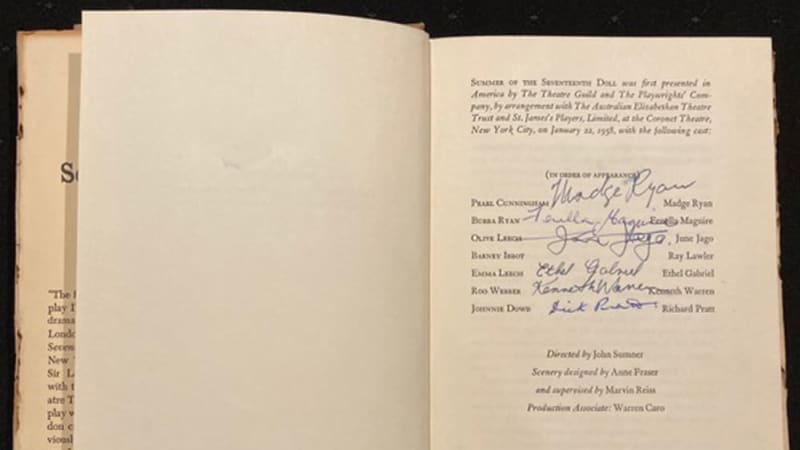
The billing page, signed by the cast
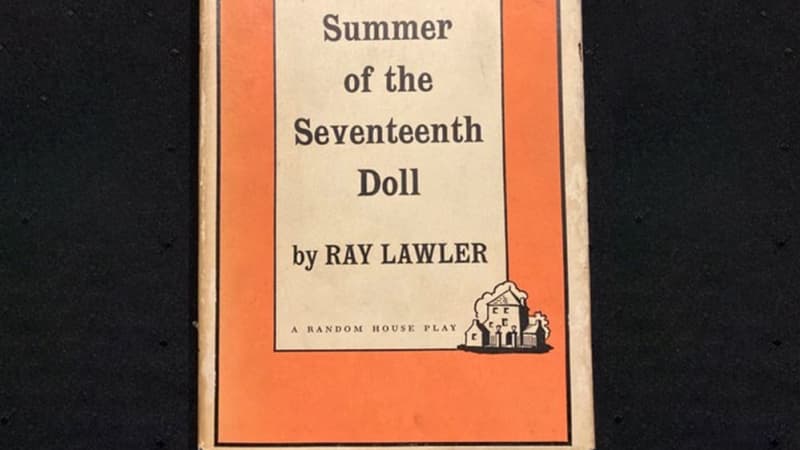
The first edition copy donated by Dianne and Chris White
First edition Doll
The family discovered the first edition copy of Summer of the Seventeenth Doll, signed by Lawler and the cast, as they were finalising Arthur’s estate following his death in October last year. The book coincides with the show’s 1958 New York season, featuring the touring cast of Australian actors – including several from the Melbourne world premiere (Ray Lawler, Fenella Maguire and June Jago) as well as its subsequent 1956 Sydney season (Madge Ryan and Ethel Gabriel) and regional tour (Kenneth Warren). In addition, it also featured Richard Pratt, who was an actor before he went into his father’s business.
Arthur and Viola ‘were friendly with Richard Pratt and the Pratt family, through Dad’s work,’ Dianne explains. ‘So, I think that’s how they would have been given the book.’ Her parents themselves saw the world premiere season staged by Union Theatre Repertory Company; Arthur later also attended MTC’s 2012 staging. ‘Dad used to cut out reviews and articles, so inside the book there were reviews as well a few bits and pieces from the 2012 production, which he saw with our daughter Katherine.’
Given the importance of MTC to her parents and family, and of the Doll in the Company’s history, Dianne says the family thought it would be appropriate to donate the book back to us: ‘We feel really happy, as a family, that the book will be retained as part of the Melbourne Theatre Company’s rich history because the Company brought so much pleasure into Mum and Dad’s lives.’
We love hearing about your experiences with MTC throughout our history. While we’re off-stage, we invite you to share these stories with the MTC team – whether it’s the first MTC show you saw, a memorable evening at the theatre or a personal relationship with the Company. Share your story.
Published on 11 August 2020


